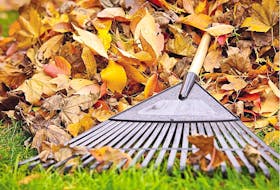While there’s lots of focus on “self-care” these days, one topic tends not to get tackled. That’s probably because it takes the conversation into the bathroom, below the belt, and inside the realm of personal hygiene.
That may change as manufacturers bring to market affordable, easy-to-install toilets and toilet seats with bidet features. They deliver the same benefits as the conventional stand-alone, seat-sized bidet — which has a water source for personal cleansing — with less complicated plumbing and a smaller footprint.
Along with adding space and style to a bathroom, bidet toilets and integrated seats can provide a better clean than paper alone, which can cause irritation and spread germs. Using water to cleanse can also help with hemorrhoids, urinary tract infections, irritable bowel disorder, and constipation.
Bidets can also reduce by up to 75 per cent the use of toilet paper, each roll of which uses approximately 140 litres of water to manufacture. Paper’s environmental impact is made worse by the fact that many brands are bleached with chemicals that can be released back into the water table.
They can also reduce the use of wet wipes, which also come with environmental costs. According to a study by Ryerson University’s Urban Water department www.ryerson.ca/water not only do a majority of wipes require multiple flushes to clear a drain, they disintegrate poorly, leading to clogged municipal pipes. Many wipes also contain polypropylene, which can end up in oceans as microplastic.
American Standard’s Advanced Clean line offers several bidet options, including the 3.0 SpaLet bidet seat, one of which the Man of the House (MOTH) installed on an existing elongated American Standard toilet while I was away on an overnight trip. MOTH reported that it was fairly routine DIY job, and patiently explained to me that the bidet function is fed from a retractable nozzle using water that comes off a branch of the main water supply to the toilet, and not from the toilet bowl itself!
Note: American Standard compensated me for creating content on this topic, and provided me with a bidet seat. They did not direct my views, or review this material. For more information about where to buy these products, visit www.americanstandard.ca .
Temperature, strength and direction of water flow is adjustable with a small, discrete, wall-mounted unit with easy-to-understand instructions and clear graphics. I discovered how important this was while trying out a bidet seat from another brand at a luxury hotel; the panel was nowhere near as intuitive as the 3.0 and I got a blast of too-warm water that was both unexpected and unpleasant.
There’s also a deodorizing feature and a setting to clean the nozzle. This model has a heated seat — a nice touch on a cold winter morning. A drying function can further reduce use of toilet paper. Family members agree it’s very functional, and does add to a feeling freshness and well-being.
American Standard also sells a bidet toilet; the Advanced Clean 100 SpaLet shares many features with the seats, and has automatic flush settings, as well as an auto open/close lid and seat. Cost is around $5,100.
I’ve been testing the 3.0 seat for more than two months now. At around $1,990, it’s definitely an investment, but one I think represents excellent value. In fact, I don’t think I’d design a bathroom without a bidet seat. If cost was an issue, I’d scale back on fixtures like faucets and tile or floor finishes in order to fit it in the budget.
It’s also occurred to me that it would be extremely useful for anyone with limited mobility and for the elderly; installing one for my late mother would have helped us avoid some difficult conversations about personal hygiene, possibly prevented infection, and — most significantly — increased the sense of independence that was so important to her as she aged. That would have been priceless.
Copyright Postmedia Network Inc., 2019








